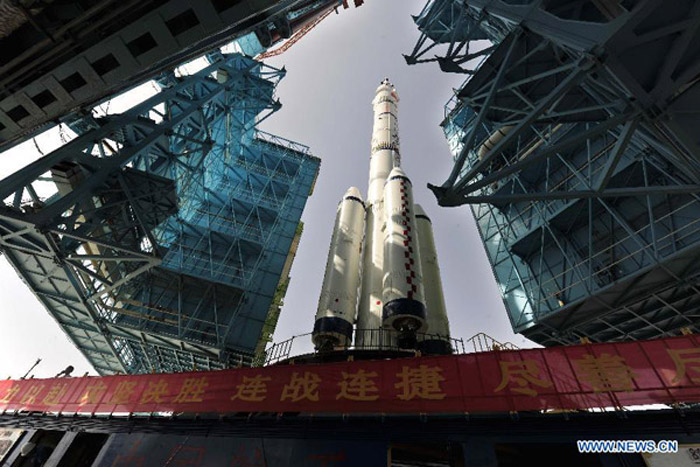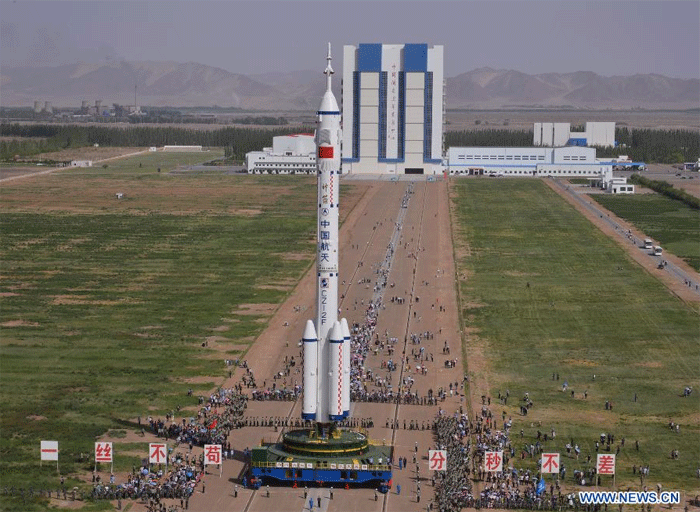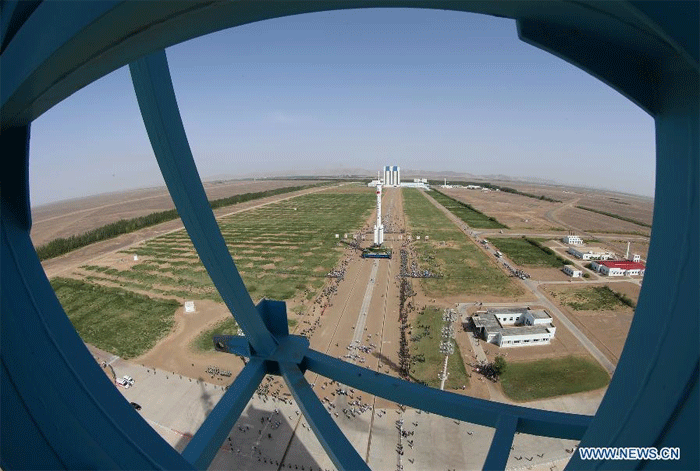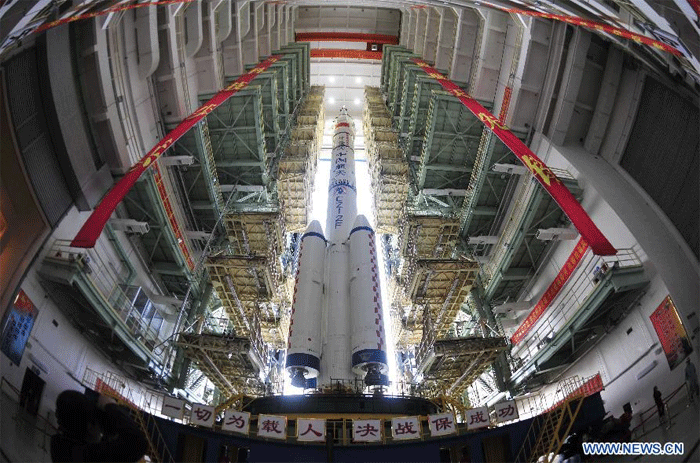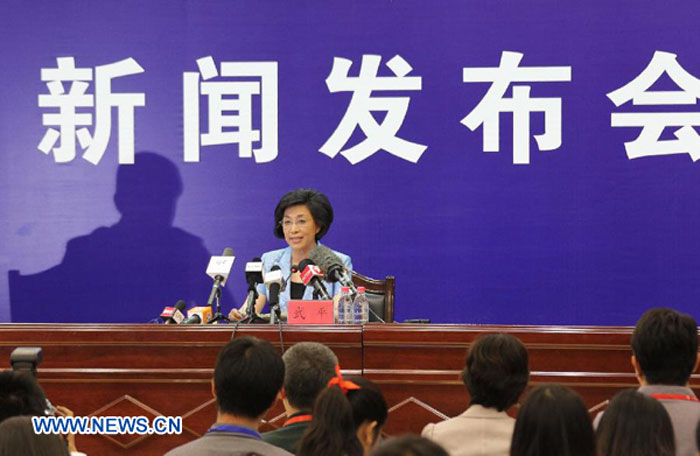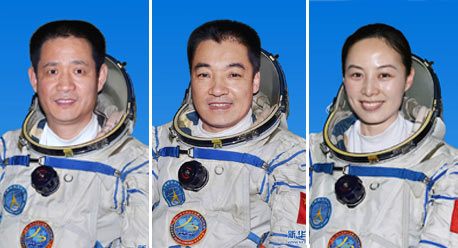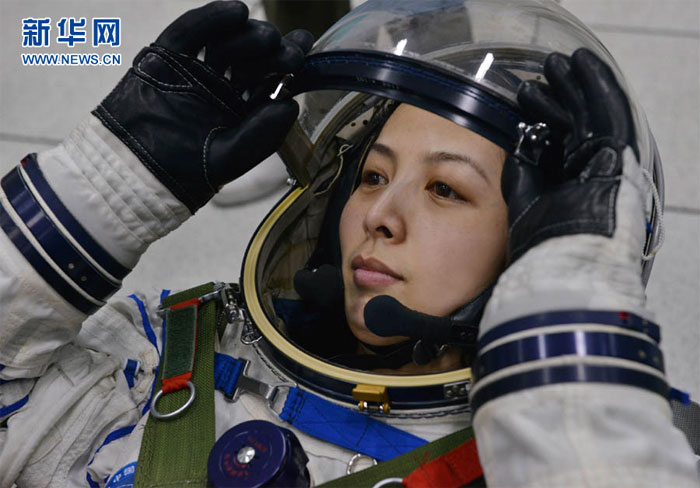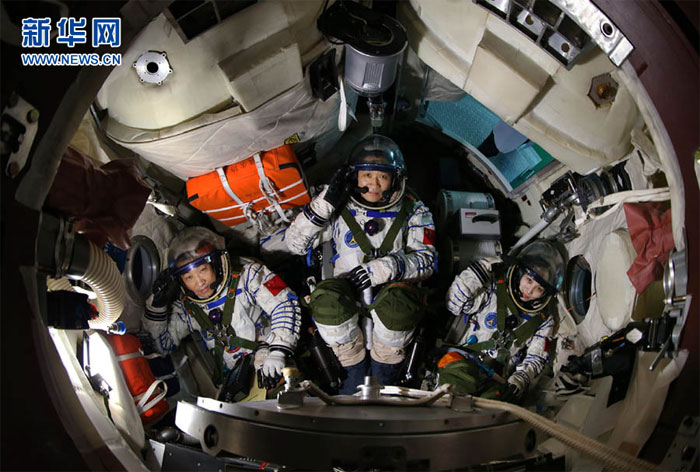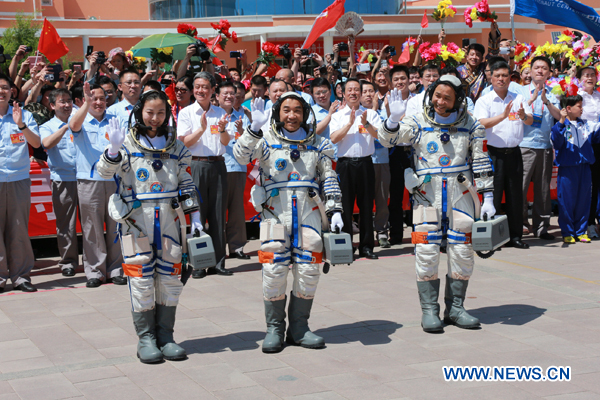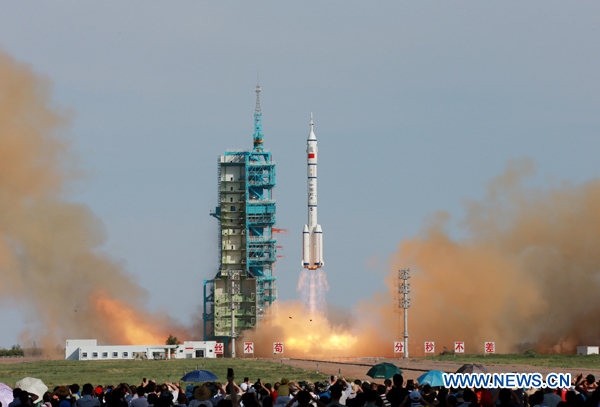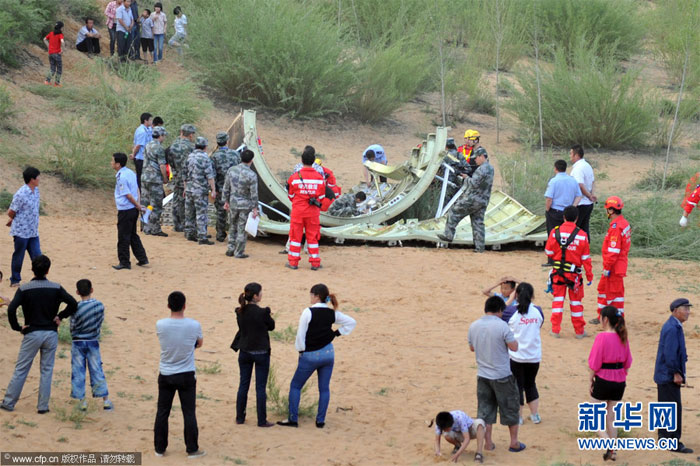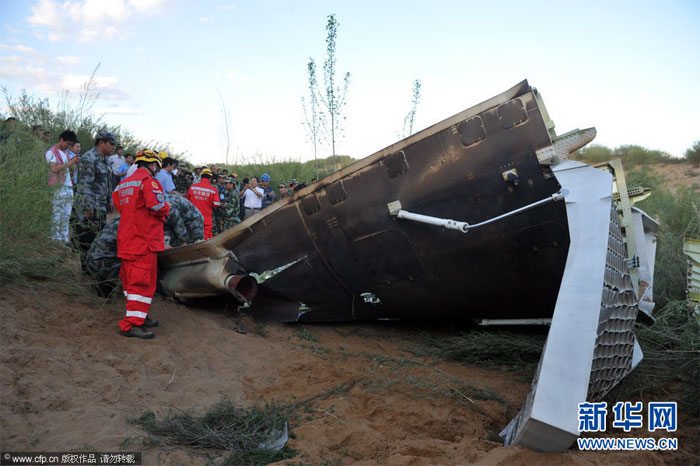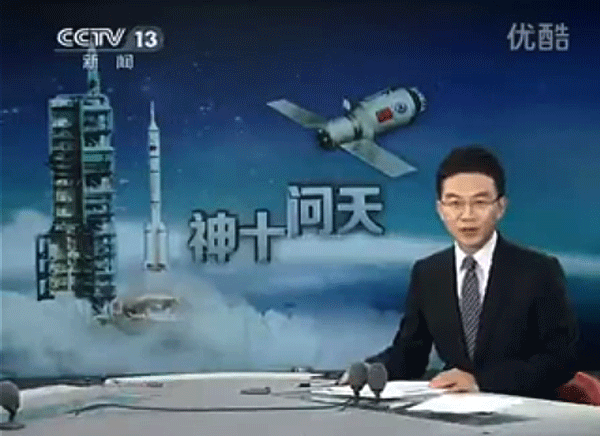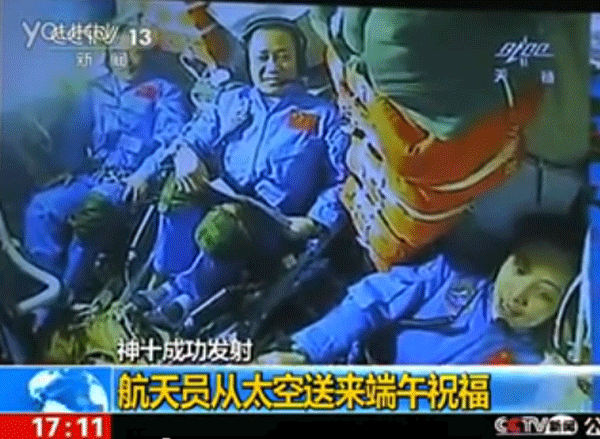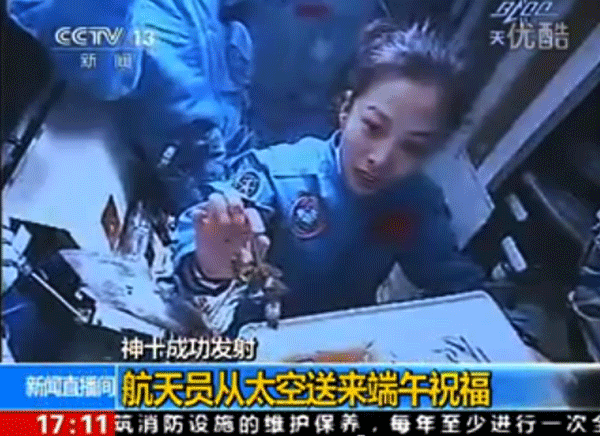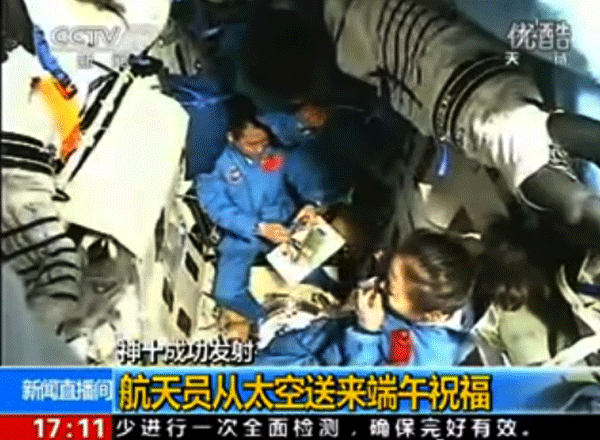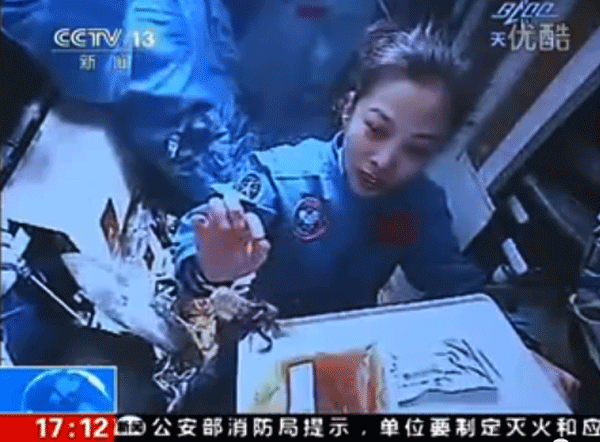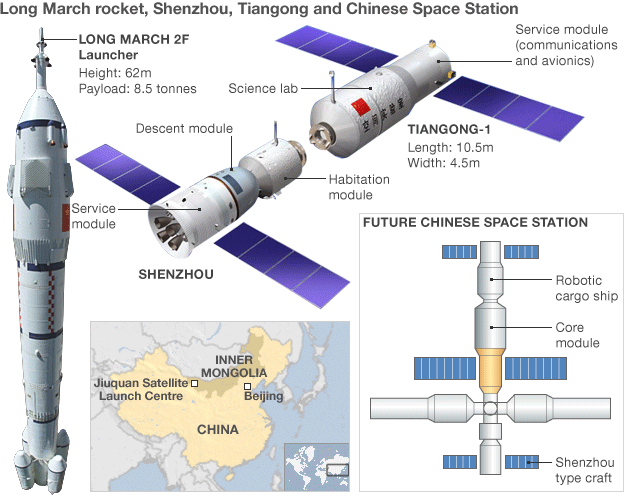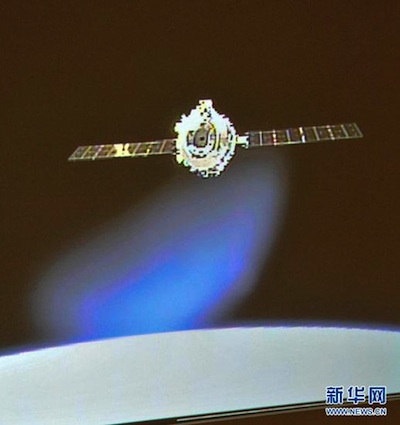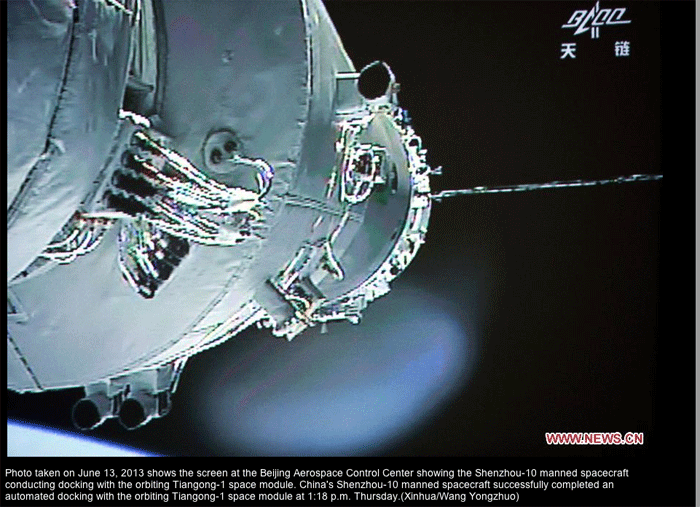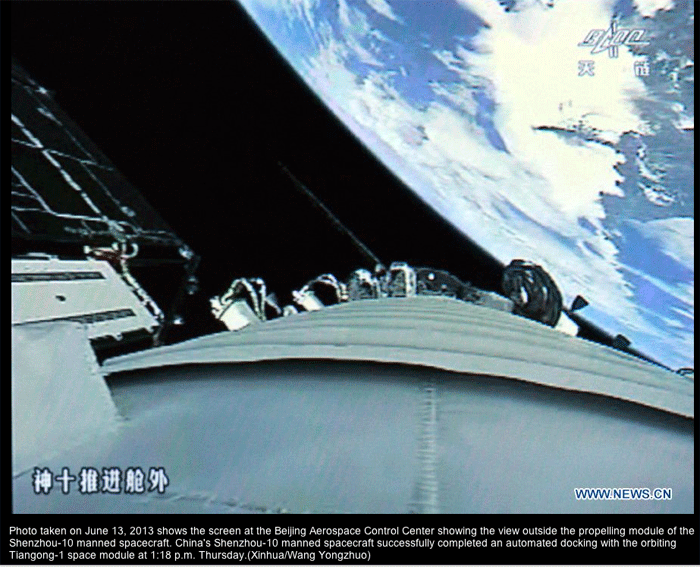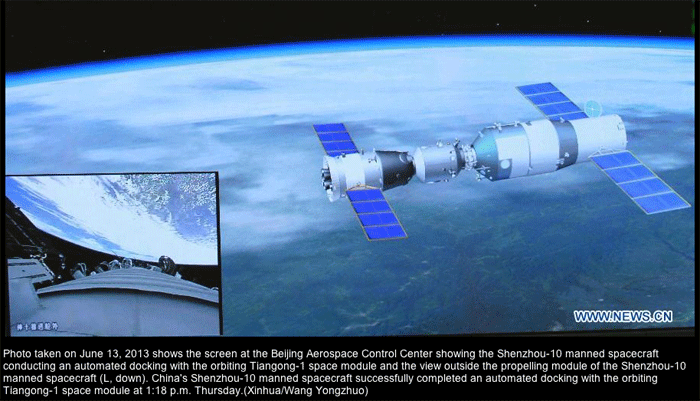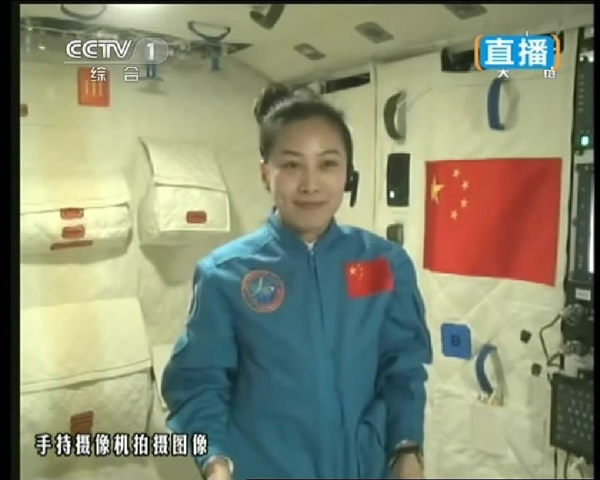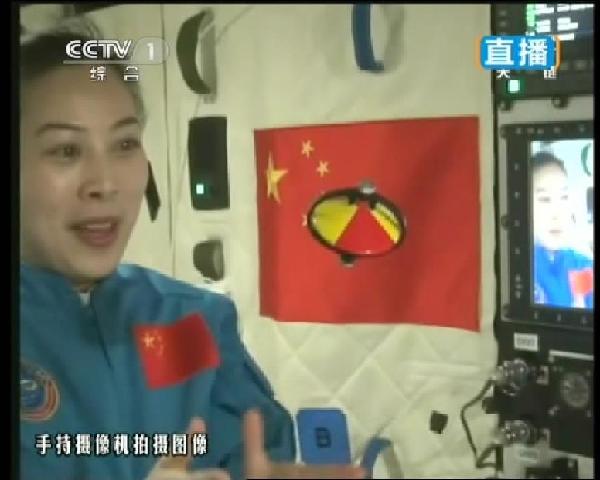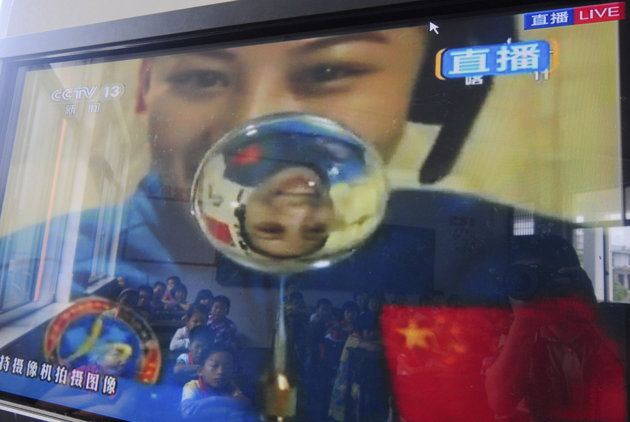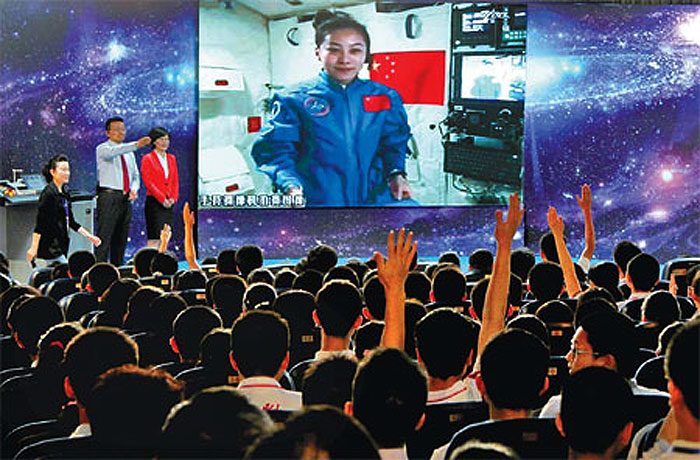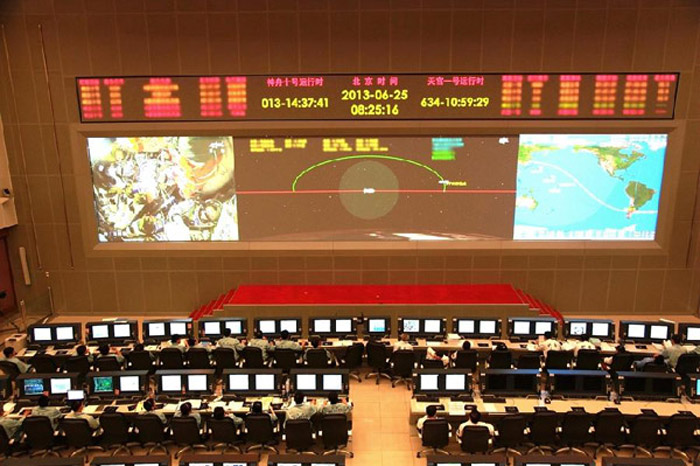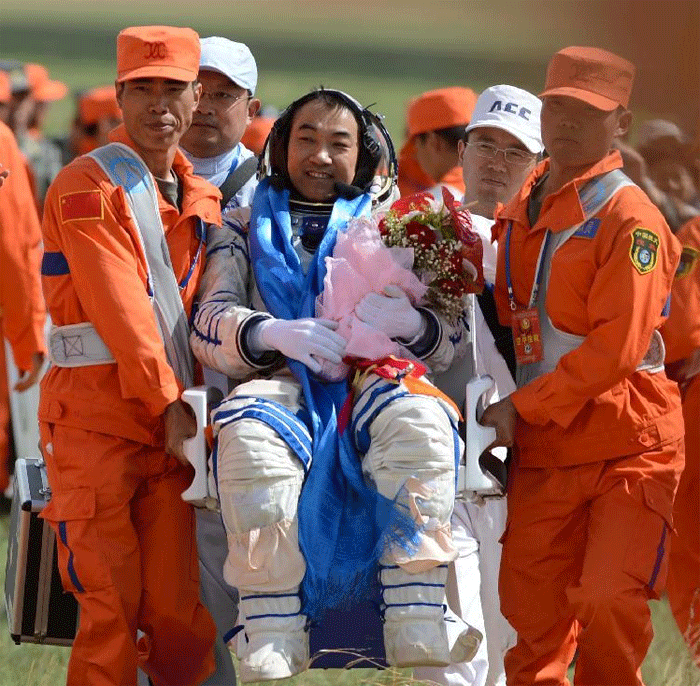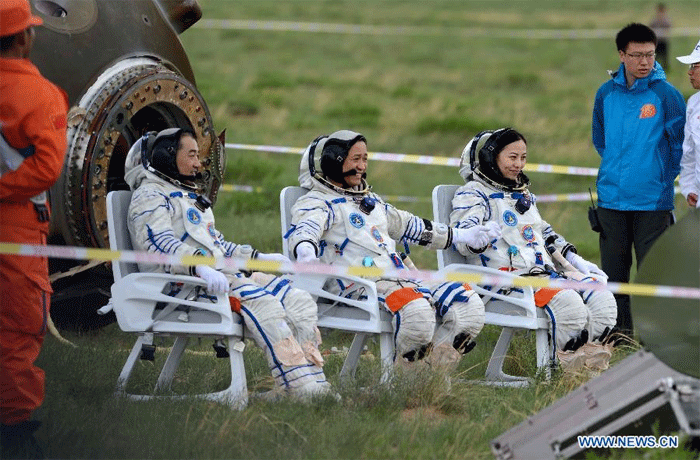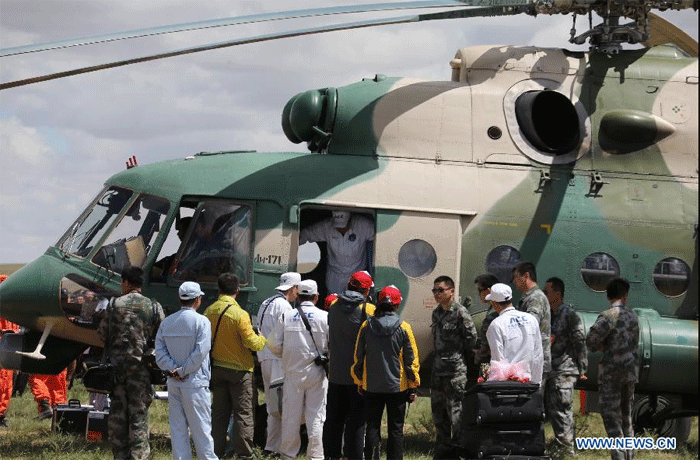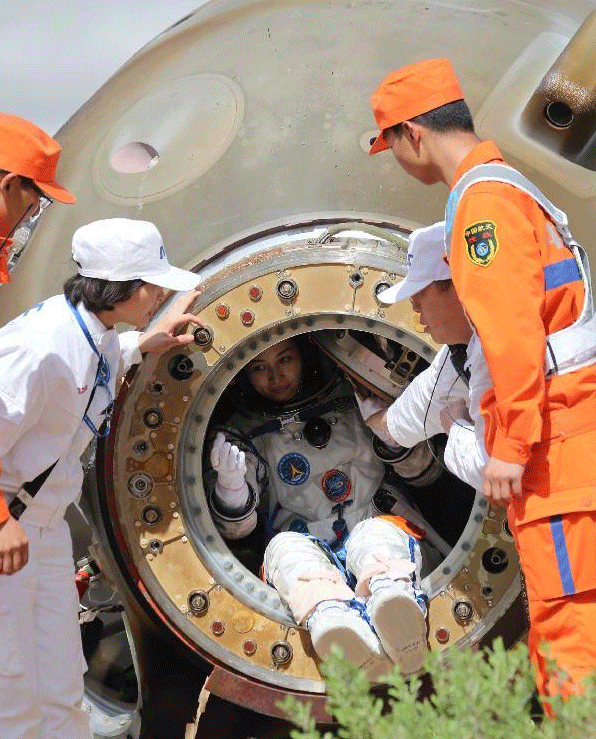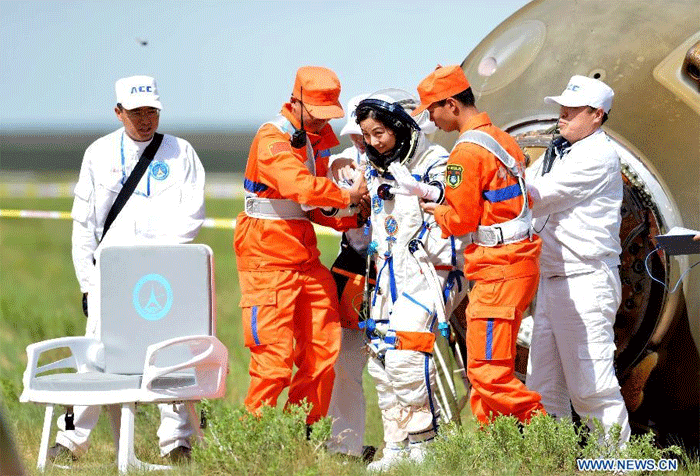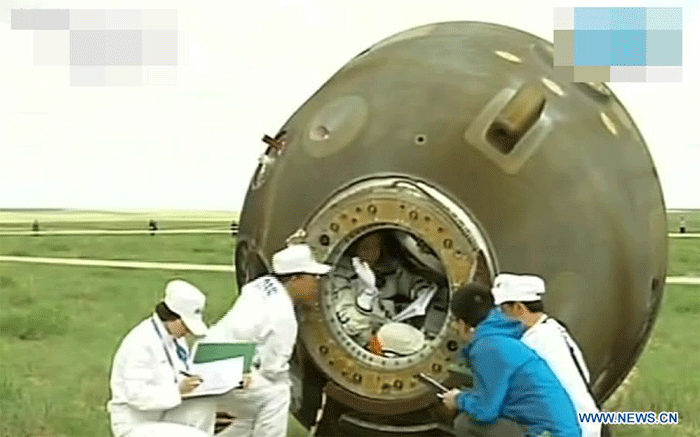BEIJING, In China's first "space class", the country's second female astronaut in space Thursday says she and her crewmates haven't seen any UFOs during the space trip.
Female astronaut Wang Yaping, one of the three crew members of Shenzhou-10 spacecraft, greeted about 330 primary and middle school students at a Beijing high school, through a live video feed system, about 340 km above the Earth.
"Through the front windows, we can see the Earth and many other stars, but up till now, we haven't seen any UFOs,"Wang says.
"We are beyond the (Earth's) atmosphere and due to the lack of obstructing atmosphere, the stars we see are much brighter, but they do not twinkle," she says.
"Meanwhile, due to the absence of the atmosphere with its light scattering feature, the sky we see is not blue but is deep dark. And also I can tell you a wonderful phenomenon: we can see sunrises 16 times a day as we circle the Earth every 90 minutes," she adds.
.
Astronaut Wang Yaping wowed millions of students on Thursday when she held China's first science lesson from space.
Wearing a blue spacesuit and appearing via video link, China's second woman in space demonstrated physics only possible in low gravity.
It was the second video class delivered from an orbit more than 300 kilometers above the Earth's surface, with US astronaut Barbara Morgan's 25-minute class being the first in 2007.
"We hope the class will trigger young people's interest in space and spur their spirit of exploration," said Yu Changxue, a senior official with the Ministry of Education.
The class, with one part held in a Beijing school with 335 student representatives from 16 schools and the other held in the orbiting Tiangong-1 space module, started with a short video recorded by the three astronauts that introduced how they sleep in a standing position in blue sleeping bags, how they eat and drink from sealed bags, and how to somersault in space.
Commander Nie Haisheng made a show of crossing his legs in the air in a meditation posture - which only a martial arts master can do in the movies, but is impossible for people on Earth.
Wang smiled as she pushed Nie into the wall of the module with a gentle nudge of her hand, and went on to gulp down a floating drop of water.
"Thanks to the weightless condition, we're all masters," she joked.
The two then conducted a string of experiments that demonstrated how objects behave in low gravity - from a bubble of water to a spinning toy.
Wang started with a question of how astronauts measure weight in the weightless orbiter.
Nie demonstrated by measuring his weight on the special scale onboard the orbiter, which was designed on the basis of Newton's second law of motion, or measuring the mass of an object through net force and acceleration.
It was followed by an experiment where she held out a small ball tied to a string. "What will happen if I let the ball go?" she asked.
The ball did not swing as it would on Earth but stayed suspended. When she pushed the ball gently, the ball moved in a circular motion, which stirred the classroom a bit.
Wang later pushed a static gyro and a moving gyro to change the way they move.
What appeared to excite students most were the experiments with water.
Wang made a film of water with a metal ring, and then a ball of water to explain how zero gravity magnified surface tension.
Chen Yumeng, 16, a student from Beijing No 80 High School, said the water ball experiment was an eye-opening experience, as it is impossible to see on Earth.
On Earth, the effect of gravity and buoyant force will make air ascend inside water, but in low gravity, air bubbles stay inside the water, she said.
"The demonstration is too short, just 40 minutes," Chen said. "I wished the astronauts could do more experiments up in space."
Xiao Jianqiao, a student from Beijing No 2 High School, said he never imagined the astronauts would demonstrate objects in low gravity in such innovative ways.
"Today it's really a joyful surprise that our Chinese astronauts did things like inject red liquid into a ball of water, making its shape stand out."
After the experiments, astronauts also answered questions from students, including the difference between up and down in space, the recycling of water in the orbiter, space debris, the impact of a gravity-free environment on the human body and the view through windows of Tiangong-1.
"Through the front windows, we can see the Earth and many other stars, but up to now we haven't seen any UFOs," Wang said in answer to a question from a fourth-grade student.
"I will tell you a wonderful phenomenon: We can see the sun rise 16 times a day, as we circle the Earth every 90 minutes," she said.
Karl Bergquist, the administrator for international relations department at the European Space Agency, said events like the space lecture are very important to increase the interest and awareness of young people for space exploration.
"I am sure that there are many of the students in the audience who, today, after the lecture, are dreaming of becoming astronauts or working with space when they grow up."
On Thursday, about 60 million students from 80,000 middle schools watched or listened to the live broadcast on TV and radio.
The video class received warm feedback from students, and experts said preparations started a year ago.
Jin Sheng, a member of an expert panel that planned the experiments, said ideas were solicited from the public.
"In a spacecraft with limited space, where supplies are measured by grams instead of kilograms, the fact the astronauts had brought 2.9 kg of teaching aids shows China has attached great importance to education," he said.
"Listening about things differs greatly from seeing things with your own eyes. After seeing these wonderful phenomena, the children will develop interests in science and think of questions from a different angle. This is the meaning of this class."
The Shenzhou X spacecraft, which lifted off from Jiuquan Satellite Launch Center in Northwest China's Gansu province on June 11, is expected to return on Wednesday after 15 days in space.
After a successful robotic docking last week, the astronauts will conduct a manual docking.
.
Quelle: China Daily
.
Update: 22.06.2013
CHINESE SPACE STATION CROSSES THE SUN: Earlier this week in the sunny skies above the south of France, China's experimental Tiangong-1 space station flew directly in front of the sun. Using a filtered 6-inch telescope, astrophotographer Thierry Legaultrecorded the station's silhouette alongside big sunspot AR1775:

"I recorded two transits--one on June 16 and another on June 17th," says Legault. "They show the Tiangong-1 with 3 taikonauts inside."
.
Update: 23.06.2013
Shenzhpu-10 von Spacestation Tiangong-1 abgedockt

Photo taken on June 23, 2013 shows the screen at the Beijing Aerospace Control Center showing astronauts celebrating on the success of the manual docking between Shenzhou-10 manned spacecraft and Tiangong-1space module. China's Shenzhou-10 manned spacecraft successfully completed a manual docking procedure with the orbiting Tiangong-1 space module at 10:07 a.m. Sunday, according to the Beijing Aerospace Control Center.
.
China's Shenzhou-10 manned spacecraft successfully completed a manual docking procedure with the orbiting Tiangong-1 space module at 10:07 a.m. Sunday, according to the Beijing Aerospace Control Center.
Launched on June 11 from northwest China's Gobi desert, the Shenzhou-10 successfully completed an automated docking procedure with the Tiangong-1 on June 13, with three astronauts aboard the Shenzhou-10 entering the space module.
At 8:26 a.m. Sunday, the spacecraft was manually separated from the Tiangong-1 module.
After the Beijing Aerospace Control Center remotely examined the spacecraft and the module, the Shenzhou-10 approached the module, with astronaut Nie Haisheng piloting the spacecraft and the other two crew members, Zhang Xiaoguang and Wang Yaping, monitoring instruments and making sure the craft was on target.
At 10:00 a.m. the spacecraft made contact with the Tiangong-1 and at 10:07, the two connected.
According to their mission schedule, the astronauts will enter the space module again and carry out scientific experiments.
The Shenzhou-10 is China's fifth manned spacecraft. Its current flight is China's first application-orientated space flight since the country's manned space program started in 1992.
China is the third country after the United States and Russia to acquire the technologies and skills necessary for space rendezvous and docking procedures, as well as supply manpower and material for an orbiting module via different docking methods.
Previous docking procedures conducted between Shenzhou-type spacecraft and the space module include two automated dockings by the unmanned Shenzhou-8 in 2011 and both an automated and manual docking by the manned Shenzhou-9 in 2012.
The Tiangong-1 space lab has been in orbit for more than 600 days. It will remain in service for another three months.
The module is considered the first step in building a permanent space station, which the country aims to do by 2020.
Quelle: Xinhua
.
Update: 25.06.2013
.
Shenzhou-10 to return after fly-around, rendezvous test
Photo taken on June 25, 2013 shows the screen at the Beijing Aerospace Control Center showing Chinese spacecraft Shenzhou-10 docking with the target module Tiangong-1 in a fly-around and docking test. It marked China's first ever such test.
.
Chinese spacecraft Shenzhou-10 with three astronauts onboard will return to the Earth around 8 a.m. Wednesday after successfully conducting a fly-around and rendezvous test Tuesday with the target module Tiangong-1, the Beijing Aerospace Control Center said.
The successful fly-around and rendezvous was China's first ever such test.
Following a separation from the Tiangong-1 at 7:05 a.m. Beijing Time, the manned Shenzhou-10 moved back to a point from where the spacecraft changed its orbit and flew around the target module.
Under the command of ground-based professionals, Shenzhou-10 adjusted its flight gesture at a point behind Tiangong-1, and approached and rendezvoused with the target module.
Shenzhou-10's separation from the Tiangong-1 target module marked that the Tiangong-1 has completed its designed mission.
Earlier, the three astronauts, Nie Haisheng, Zhang Xiaoguang and Wang Yaping, shut door of the Tiangong-1 and moved back to the return capsule of the Shenzhou-10 at around 5 a.m., after collecting experimental equipment and items inside the target module with the coordination of ground staff.
Verbally and using sign language, the three astronauts expressed thanks and respect to the ground staff for their contributions during the mission.
China's first space laboratory and target orbiter, Tiangong-1, has revolved Earth since it was sent to orbit on Sept. 29, 2011.
Launched on June 11, Shenzhou-10 docked with Tiangong-1 automatically and later manually. In the 12 days spent in Tiangong-1, astronauts conducted space medical experiments, technical tests and delivered a lecture to students about basic physics principles.
Tiangong-1 will now go to a higher orbit for long-term flight.
A total of six astronauts in the Shenzhou-9 and Shenzhou-10 missions visited the space laboratory.
.
China's first space lab completes its mission
.
China's Shenzhou-10 spacecraft on Tuesday separated from the Tiangong-1 target module, which has completed its historical mission.
In coordination with ground staff, the three astronauts onboard collected experimental equipment and items on Tiangong-1, and returned to Shenzhou-10 before separating.
China's first space laboratory and target orbiter, Tiangong-1, has revolved Earth since it was sent to orbit on Sept. 29, 2011.
It will now go to a higher orbit for long-term flight.
Verbally and using sign language, the three astronauts, Nie Haisheng, Zhang Xiaoguang and Wang Yaping, expressed thanks and respect to the ground staff for their contributions during the mission.
Launched on June 11, Shenzhou-10 docked with Tiangong-1 automatically and later manually. In the 12 days spent in Tiangong-1, astronauts conducted space medical experiments, technical tests and delivered a lecture to students about basic physics principles.
Shenzhou-10 spacecraft will return to Earth at about 8 a.m. Wednesday.
Six astronauts in the Shenzhou-9 and Shenzhou-10 missions visited the space laboratory.
Quelle: CHINA-NEWS
.
Update: 26.06.2013
.
Astronauts aboard Shenzhou-10 spacecraft ready to return
The three astronauts aboard China's Shenzhou-10 spacecraft have put on air-tight suits and taken their place in the return capsule.
The hatch of the return capsule has been closed and the spacecraft is ready for return, according to Beijing Aerospace Control Center Wednesday morning.
.
Astronaut Zhang Xiaoguang is escorted to board a helicopter for medical care after getting out of the re-entry capsule of China's Shenzhou-10 spacecraft following its successful landing at the main landing site in north China's Inner Mongolia Autonomous Region on June 26, 2013. Xinhua
Astronauts Zhang Xiaoguang, Nie Haisheng and Wang Yaping (from left to right) pose after getting out of the re-entry capsule of China's Shenzhou-10 spacecraft following its successful landing at the main landing site in north China's Inner Mongolia Autonomous Region on June 26, 2013. Xinhua
Astronauts Zhang Xiaoguang, Nie Haisheng and Wang Yaping (from left to right) greet the people after getting out of the re-entry capsule of China's Shenzhou-10 spacecraft following its successful landing at the main landing site in north China's Inner Mongolia Autonomous Region on June 26, 2013. Xinhua
Astronauts are escorted to board a helicopter for medical care after getting out of the re-entry capsule of China's Shenzhou-10 spacecraft following its successful landing at the main landing site in north China's Inner Mongolia Autonomous Region on June 26, 2013. Xinhua
Astronaut Wang Yaping goes out of the re-entry capsule of China's Shenzhou-10 spacecraft following its successful landing at the main landing site in north China's Inner Mongolia Autonomous Region on June 26, 2013. Xinhua
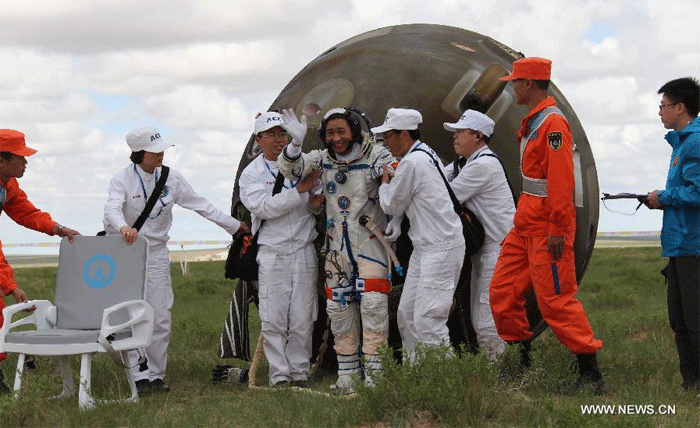
Astronaut Nie Haisheng goes out of the re-entry capsule of China's Shenzhou-10 spacecraft following its successful landing at the main landing site in north China's Inner Mongolia Autonomous Region on June 26, 2013. Xinhua
Astronaut Wang Yaping (C) goes out of the re-entry capsule of China's Shenzhou-10 spacecraft after its successful landing at the main landing site in north China's Inner Mongolia Autonomous Region on June 26, 2013. Xinhua
The screenshot shows the three astronauts having prepared to go out of the re-entry capsule of China's Shenzhou-10 spacecraft after its successful landing at the main landing site in north China's Inner Mongolia Autonomous Region on June 26, 2013. (Xinhua)
Quelle: Xinhua
![]()
